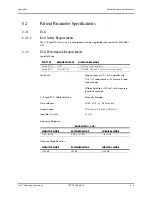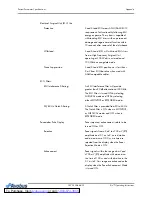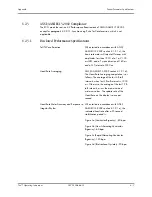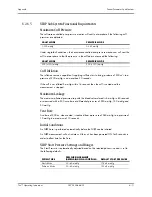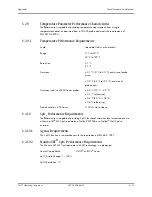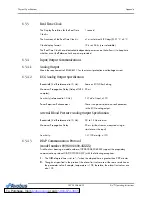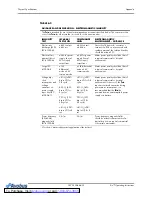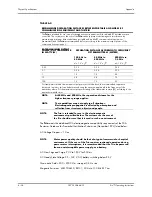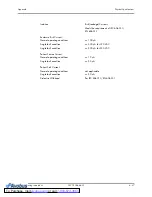
Trio™ Operating Instructions
0070-10-0666-01
6 - 15
Appendix
Patient Parameter Specifications
Masimo SET
®
Reference Footnotes
1
The Masimo SET MS-7 pulse oximeter with LNOP or LNCS sensors has been validated for
no motion accuracy in human blood studies on healthy adult volunteers in induced hypoxia
studies in the range of 70% to 100% SpO
2
against a laboratory co-oximeter and ECG
monitor. This variation equals plus or minus one standard deviation. Plus or minus one
standard deviation encompasses 68% of the population.
2
The Masimo SET MS-7 pulse oximeter with LNOP or LNCS sensors has been validated for
motion accuracy in human blood studies on healthy adult volunteers in induced hypoxia
studies while performing rubbing and tapping motions at 2 to 4 Hz. At an amplitude of 1 to
2 cm and non-repetitive motion between 1 to 5 Hz. At an amplitude of 2 to 3 cm in induced
hypoxia studies in the range of 70% to 100% SpO
2
against a laboratory co-oximeter and
ECG monitor. This variation equals plus or minus one standard deviation. Plus or minus one
standard deviation encompasses 68% of the population.
3
The Masimo SET MS-7 pulse oximeter has been validated for low perfusion accuracy in
bench top testing against a Biotek Index 2 simulator and Masimo’s simulator with signal
strengths of greater then 0.02% and a % transmission of greater than 5% for saturations
ranging from 70 to 100%. This variation equals plus or minus one standard deviation. Plus
or minus one standard deviation encompasses 68% of the population.
4
The LNOP Ear sensor has an SpO
2
accuracy (including low perfusion) of 70% to 100%
±3.5% for adults during no motion conditions, however, since the monitor can not display
1/2 digits, the accuracy is rounded to ±4 digits.
5
The SpO
2
accuracy during motion conditions is not specified for the LNOP Ear sensor.
NOTE:
The sensor measurement wavelengths are nominally
660 nm for the red LED and 940 nm for the infrared LED.
Maximum optical power output for LED is 4 mW.
To Purchase, Visit





